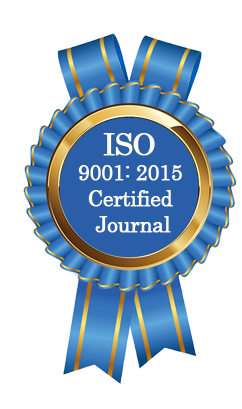| All | Since 2020 | |
| Citation | 105 | 60 |
| h-index | 4 | 4 |
| i10-index | 3 | 2 |
WJAHR Citation 
Login
News & Updation
Best Article Awards
World Journal of Advance Healthcare Research (WJAHR) is giving Best Article Award in every Issue for Best Article and Issue Certificate of Appreciation to the Authors to promote research activity of scholar.
Best Article of current issue
Download Article : Click here
Indexing
Abstract
EVALUATION OF THE ANTIBIOGRAM OF AQUEOUS EXTRACT OF JATROPHA TANJORENSIS AND CONVENTIONAL ANTIBIOTICS ON BACTERIAL ISOLATES FROM DIFFERENT BRANDS OF TOMATO PASTE
Ikeria Oluchi, Udu-Ibiam Onyinyechi E.*, Anoh Ruth and Chita Bridget
ABSTRACT
Tomato (Lycopersicon esculentum) is a perishable vegetable widely cultivated and consumed worldwide. The moisture content of tomatoes and mode of packaging has made it prone as source of disease permission vehicles and a major cause of food borne related diseases. The aim of this study was to evaluate the antimicrobial activities of aqueous extract of Jatropha tanjorensis and conventional antibiotics on bacterial isolates from different brands of tomato paste. A total of 50 tomato paste samples (10 different brands) were collected from the vendors. The bacterial colonies forming unit were determined using bacterial colony counting chamber. The presence of bacteria contaminants was examined using standard microbiological techniques. The inhibitory capacity of aqueous extracts of Jatropha tanjorensis was determined by dispensing the different concentrations of the extracts into the agar wells. Antibiotics susceptibility testing was done using Kirby-Bauer disk diffusion method and multiple antibiotic resistance index (MARI) were determined. The bacterial colony forming unit from the tomato paste samples were revealed to range from 1.0 x 104 to 9.2 x 104 and 39 samples had visible growth. The samples showed the presence of four different isolates, which include; Staphylococcus auerus, Escherichia coli, Campylobacter and Shigella species. The most frequently isolated bacteria were Staphylococcus aureus at the value of 16(32.0%), followed by Escherichia coli 10(20.0%) whereas the least was Campylobacter species with 5(10.0%), followed by Shigella species 7(14.0%). The inhibition zone diameter produced by the aqueous extracts of Jatropha tanjorensis on the bacteria isolates ranged from 38mm at 100mg/ml to 10mm at 25mg/ml. The bacteria isolate showed 31.0% to 100.0% resistance to erythromycin, imipenem and 85.0% to 100.0% susceptible to ciprofloxacin, amikacin, gentamycin, vancomycin. The multidrug resistance index was reported to range from 0.3 to 0.4. This study has reported presence of multidrug resistant bacteria in tomato paste and the promising potential of aqueous extracts of Jatropha tanjorensis in inhibiting the growth of these bacteria. Therefore, there is need for proper handling of food items to avoid unnecessary food related disease outbreak among the consumers.
[Full Text Article] [Download Certificate]
